The State of Arizona is managing its state land grazing leases primarily for the benefit of ranchers, not the state’s public schools – as is required by federal law.
Arizona acquired its state lands as a result of the 1910 Enabling Act that Congress passed to help the territories of Arizona and New Mexico become states. This law gave the states millions of acres of federal land solely “for the support of common schools.”
The most obvious deficiency in the management of Arizona’s state lands is the state’s below-market grazing fee. About 8.3 million acres of the state’s approximately 9.2 million acres of State Trust land are leased out by the Arizona State Land Department for livestock grazing. But during the state’s 2018 fiscal year the Department only collected about $2.9 million from its state grazing leases – or about 35 cents per acre. In 2018 Arizona’s state grazing fee was only $2.81 per animal unit month (AUM), or less than 10 cents per animal per day. This was lower than the state grazing fee of most Western states, and significantly lower than Arizona’s average private land grazing fee of $10 per AUM.
Arizona’s current state grazing fee is the result of SB 1436, sponsored by state Sen. Jim Buster, R-Yuma, which was passed by the Arizona State Legislature in 1994 in response to Interior Secretary Bruce Babbitt’s Rangeland Reform ’94 proposals. Babbitt’s proposed reforms included an increase in the federal grazing fee, and the intention of SB 1436 was to prevent any significant increase in the state’s grazing fee. The bill created a five-member Grazing Land Evaluation Commission to set a new state fee. The members were to be appointed by the governor and required to be ranching advocates. The Commission was to complete its “appraisal” and recommend a new state grazing fee formula by early 1996. A subsequent Commission to reconsider the fee could not be appointed more frequently than every five years, but there was no requirement to ever appoint another one.
The Commission recommended an increase in the state’s grazing fee from $1.53 to $2.18 per AUM. The new amount was implemented in 1996 and the formula they used to set it was adopted. Since then, Arizona’s grazing fee has fluctuated annually between $1.95 and $3.45 per AUM. During this same time period the price paid for beef cows, according to the USDA’s National Agricultural Statistics Service, increased from an average $31.00 per 100 lbs. in 1996, to $60.80 per 100 lbs. in 2018 – about a 96% increase.
In April 1997 the Arizona Auditor General completed a performance audit of the Land Department that criticized its administration of state grazing leases. In regards to the state grazing fee, it said the formula used to set it was “biased” and suggested that a new Commission should be appointed as soon as possible to reevaluate it, which was 1999 due to the restrictions that had been imposed by SB 1436. No Arizona governor, however, has ever appointed another Commission.
The Auditor General’s report also criticized the Land Department for ignoring an opportunity to increase the money raised for public schools by failing to create competition for state grazing leases, which are issued for 10-year terms. The Department didn’t publicize lease expirations, and almost never received a competing application when they came up for renewal. Subsequently, the leases typically only changed hands when they were sold to another party. The report pointed out that implementing a publicized competitive bidding process when a lease was scheduled for renewal could significantly increase revenues.
This wasn’t a new idea. Other states had done it with success, and in 1995 the Arizona Center for Law in the Public Interest (ACLPI) had filed a lawsuit asking that the Land Department be required to obtain competitive bids for grazing lease renewals. On July 23, 1997, Maricopa County Superior Court Judge B. Michael Dann responded with a ruling that found the Land Department’s restrictive lease renewal practices “systematically violate” the Enabling Act mandate to maximize revenues raised for the state’s public schools. He ordered that grazing lease renewals be put up for auction.
The judge’s decision upset the state’s ranchers so much that their proponents in the Legislature held a joint hearing of the natural resource committees of the Senate and House on September 17. The Auditor General’s report was criticized for being flawed and for having encouraged the judge to make his decision. Rep. Jake Flake, R-Snowflake, a rancher, claimed the decision would, “destroy the ranching industry as we know it.”
The conservation groups Forest Guardians* and Western Gamebird Alliance soon applied for four state grazing leases that were expiring at the end of the year. They offered to pay far more than the state’s grazing fee so they could restore the wildlife habitat located on the leased lands by resting them from grazing so they could recover. But State Land Commissioner J. Dennis Wells rejected their applications that fall because the Department had designated the lands to be leased for grazing, and the applicants did not intend to graze livestock.
Both conservation groups appealed his decisions, and in March 1998 Administrative Law Judge Brian B. Tully, of the state’s Office of Administrative Hearings, issued simultaneous and nearly identical rulings to both of them. He dismissed both appeals by validating Commissioner Well’s determinations that land leased for grazing had to be grazed. In his decision regarding the appeal by Forest Guardians, Judge Tully pointed out that Stephen Williams, the Department’s Range Section Manager, had informed them that if they wanted to restore riparian areas, for example, they needed to submit an application for a commercial lease, as that was the only category of lease wherein conservation use would fit. If the Commissioner determined that it would be in the interest of the State Trust to reclassify the riparian area for commercial lease, the successful lease applicant would be required to fence off the stream and livestock would be excluded. Supposedly, the higher lease payments the Department received from this type of commercial lease would satisfy its responsibility to maximize revenue for the schools, as required by the Enabling Act. Both of the conservation groups, however, had rejected the suggestion to apply for commercial leases because they were much more expensive, and reclassifying lands for commercial leasing could open them up to other uses that didn’t protect natural resources.
The ACPLI responded to the judge’s decision by filing a lawsuit on behalf of the two conservation groups in early May in Maricopa County Superior Court against his affirmations of the Land Department’s rejections of their grazing lease applications. It contended that the Department was required by the Enabling Act to accept the highest bids on the leases unless they could show it would be detrimental to the State Trust.
In late May the Arizona Legislature passed HB 2509 to address the repercussions of Judge Dann’s 1997 decision, and Republican Gov. Jane Hull signed it into law. The bill, sponsored by Rep. Gail Griffin, R-Hereford, a member of the Arizona Cattle Growers’ Association, required the Land Department to begin to annually publicize the expiration dates of grazing leases to facilitate competitive bidding. It also required ranchers who subleased from a state lessee to pay a 25% higher grazing fee. But it also specified that a state grazing lease could only be used for grazing livestock. And it said that the Department wasn’t required to conduct a competitive bidding process for a lease renewal if the existing lessee had superior “equities” that would “outweigh an offer of additional rent.” In other words, protecting the financial interests of existing leaseholders was more important than maximizing school revenues.
In 1999 Maricopa County Superior Court Judge Michael O’Melia responded to the ACPLI’s 1998 lawsuit by reaffirming the Land Department’s decisions to deny grazing leases to Forest Guardians and Western Gamebird Alliance. The ACPLI responded by appealing his decision to the Arizona Court of Appeals. On April 25, 2000, the Court of Appeals’ three judge panel issued a split decision. Judge Edward Voss, wrote the majority opinion in concurrence with Judge Jefferson Lankford, and it reaffirmed the Department’s decisions to deny grazing leases to the conservation groups. But Judge Rudolph Gerber wrote a dissenting opinion, which included sharp criticism of the Land Department:
“This same Department routinely allows ranchers to use their grazing leases for non-grazing purposes, sometimes for the entire duration of a grazing lease, without exacting commercial reclassification or commercial lease rates. It denies similar opportunities to conservationists. Under the current system, the identities of the applicant rather than the quality of the offer determine who gets a lease. The Department issues grazing leases to a rancher who can then immediately receive non-grazing permission for part or all of the lease duration. But it views a conservationist who wishes to rest the land at the lease inception as an impermissible non-grazer who, unlike the rancher, must request a more expensive “commercial” permit to rest tired land. The proposed uses for the land remain the same in both scenarios; only the applicants’ identities differ.”
Judge Gerber concluded with: “The Department’s devotion to its internal policies and statutes frustrates its primary fealty to the Enabling Act.”
The ACPLI, bolstered by Judge Gerber’s strong dissent, appealed their decision to the Arizona Supreme Court. This time they were successful, because on November 21, 2001, the court issued a landmark decision that vacated the Court of Appeals decision and reversed the Superior Court’s decision. The majority decision, written by Justice Stanley Feldman, said that the Land Department could not reject a grazing lease application from a high bidder solely because the bidder was a conservation group that planned to rest the land in order to restore it from overgrazing when the Department routinely permitted ranchers with state grazing leases to rest the land. The decision pointed out that the Department’s Range Section Manager had admitted that non-use permits issued to ranchers with state leases may have covered up to one million acres.
Ranchers were alarmed by the decision and warned it would allow “environmental extremists” to “lock up” the land by outbidding ranchers. In 2002 their supporters in the Legislature passed SB 1274, sponsored by Sen. Dean Martin, R-Phoenix, and signed in May by Gov. Hull. The bill made it more difficult for conservation groups to obtain state grazing leases. It strengthened the Department’s ability to avoid having to conduct competitive bids for lease renewals if the existing leaseholder was found to have superior “equity,” while leaving the meaning of equity undefined. It also added some financial requirements for a new leaseholder that had obtained a lease through competitive bidding. Before the Department could issue the new lease, the new leaseholder had to pay a full year of rent, and the appraised value of the range improvements owned by the previous leaseholder – unless the previous leaseholder agreed to an extended payment schedule. Furthermore, it required the new lessee to maintain all of the existing range improvements in serviceable condition, even if they weren’t going to graze any livestock.
These requirements highlighted a longstanding contradiction in the Department’s administration of grazing leases. Many of the fences and livestock waters located on State Trust grazing lands were wholly or partially paid for by government assistance programs for ranchers, such as EQIP assistance from the USDA’s Natural Resources Conservation Service (NRCS), or HPC grants and Heritage Fund money from the Arizona Game & Fish Department. The ranchers may have contributed to the labor to build them, but the agencies paid for the materials and equipment. Despite this, Arizona state law considers them to be the private property of the grazing lessees, no matter if they were built with the help of government assistance.
In June 2002, after the passage of SB 1274, and seven months after the Supreme Court’s decision to allow conservation groups to obtain grazing leases, Hull’s new State Land Commissioner Michael Anable finally issued orders to quash the Department’s denials of the grazing lease applications submitted by the conservation groups in 1997. Commissioner Anabel also instructed the Department to begin the procedures for processing the conflicting lease applications, as if the existing grazing leases were still up for renewal. (The Department had renewed the existing leases with stipulations they could be terminated if subsequent appeals of the denials of the competing lease applications were successful.)
New Lease #05-103432
One of the lease applications submitted by Forest Guardian’s was for state grazing lease #05-95506, which included an intermittent stretch of the upper Babocomari River near Elgin, in Santa Cruz County. It encompassed only about 162 acres and its carrying capacity was set at just two head of cattle. There were few, if any, reimbursable range improvements owned by the existing lessee.

The Department’s processing of Forest Guardians’ competing lease application began with the nebulous procedure of determining if the existing leaseholder, Ethlyn Telles, had superior equities that made it was unnecessary to solicit competitive bids. But before that was completed, Democrat Janet Napolitano won the Arizona gubernatorial election in the fall of 2002 and appointed Mark Winkleman to be the new State Land Commissioner in early 2003.
Subsequently, on April 3, 2003, Commissioner Winkleman issued Order No. 236-2002/2003 wherein he determined that the existing lessee did not have superior equities for the lease, so the Department would accept competitive bids. On May 16 Winkleman issued an order that found that Forest Guardians had won the lease by submitting the top bid. In 2003 the state grazing fee was only $2.14 per AUM, and they had offered to pay $84.40 per head per month – or about 40 times more.
The bidding process, however, was marred by a State Land Department employee “inadvertently” allowing an unidentified representative of the existing leaseholder to see Forest Guardians’ sealed bid. The unidentified person was then allowed to submit a new bid for the existing leaseholder that was slightly higher. When the Department opened the bids and announced the existing leaseholder was the winner, Forest Guardians reviewed the Department’s records and discovered what had happened. They submitted a written complaint, and the Department backed down and agreed that the existing lease holder’s revised bid had to be rejected. A Department official claimed it had been a “simple mistake” and wouldn’t happen again. On July 7, 2004, Forest Guardians signed the state’s first conservation grazing lease, identified by the new lease number #05-103432. (Forest Guardians had previously withdrawn its application to obtain another state grazing lease in August 2002 because it was part of the enormous Cataract Ranch, so the cost of purchasing and maintaining the existing range improvements was prohibitive.)

The acquisition of the state grazing lease by Forest Guardians was considered to be an apocalyptic development by most Arizona ranchers and they began to promote state grazing reform proposals designed to provide more security for existing grazing leaseholders. They were unsuccessful, however, until 2006, when the Legislature passed HCR 2045, sponsored by Rep. John Nelson, R-Glendale. This resolution, which didn’t require Gov. Napolitano’s signature, put Proposition 105 on the 2006 state election ballot. It asked voters to approve an amendment to the state constitution that would revise the management of State Trust lands with changes that were promoted by the Home Builders Association of Central Arizona and the Arizona Cattle Growers’ Association. Ranchers liked Proposition 105 because it specified that a grazing lease could only be acquired for grazing livestock. And it allowed the State Land Department to increase the terms of grazing leases to twenty years. But voters rejected the measure by a 71% to 29% margin.
Lease #05-001662
In early 2006 Forest Guardians submitted another application for an expiring state grazing lease. This lease, #05-001662, included a mostly perennial stretch of the Little Colorado River in Apache County, where they proposed to restore the riparian habitat by resting it from grazing. On October 3, 2007, Commissioner Winkleman issued Order No. 093-2007/2008 wherein he determined that the existing lessees did not have superior equities for the lease, so the Department would accept competitive bids.
But the existing lessees, Galyn and Roxanne Knight, refused to participate in the bidding and in November they appealed the Commissioner’s determination that they didn’t have superior equities. Administrative Law Judge Thomas Shedden conducted a hearing on their appeal in February 2008 that included testimony from both sides.
The lessees’ son, Traegen Knight, testified that his parents used the state lease land for winter grazing, as they held permits to graze allotments on the nearby Apache-Sitgreaves National Forests in the summer. He said they ran about 200 to 350 head of cattle on the ranch. He claimed that some member of the Knight family was on the leased land every day, which allowed them to protect it. In regards to the Little Colorado River, he explained that cattle were only allowed to cross the “south water gap,” located on the river near a little-used dirt road crossing, when they were being moved between the winter and summer range. He added, however, that the south water gap was also used as a trap pasture, where cattle were held a couple of times a year as they were are moved between winter and summer ranges.
The Department’s Range Section Manager Stephen Williams testified that he had visited the leased land and found the riparian habitat along the Little Colorado River to be in better shape than what Forest Guardians had claimed in their statement of equities. Because of that, and especially because the family lived near the leased land, he said that he believed that the Knights had superior equities which outweighed Forest Guardians’ offer of higher rent, as the Knight’s could provide better stewardship and protection to the land. He said he had included this determination in the report he had submitted to Commissioner Winkleman regarding the conflicting lease applications, but the Commissioner had used his discretion to determine that the Knights didn’t have superior equities.
John Horning CEO of Forest Guardians testified that they had submitted two lease applications, one for the entire leased parcel, and one for 1,199 acres along the Little Colorado River, and had requested the Department to split the parcel into two leases, as they were primarily concerned with protecting the river.
Galyn Knight, one of the lessees, testified too. He explained that his cattle could only graze on the national forest from May 16 through October 31, so they were driven back and forth between the ranch and forest over a historic trail about 40 miles long. He admitted that he allowed cattle to graze along the Little Colorado River on the leased land, but “not too heavily.” He also admitted that their ranching operation didn’t generate a reliable living income, and estimated the previous year’s profit was only $3,500. He explained that he and his wife Roxanne also operated the Reeds Lodge hotel in nearby Springerville.
On April 14, 2008, Administrative Law Judge Thomas Shedden ruled in favor of the Knights. He found that they had superior equities, and that the Forest Guardians’ offer to pay much higher rent did not outweigh them. He ordered Commissioner Winkleman to abandon the bidding process and approve the Knight’s application to renew the grazing lease. (The Department had allowed the Knights to continue grazing the land after their previous lease expired in 2006, pending the resolution of the competing lease applications.)
On May 13 Commissioner Winkleman accepted Judge Shedden’s ruling. He offered no explanation for his change of heart. The ACLPI responded by submitting a request on behalf of Forest Guardians for a rehearing or review of his decision to accept the judge’s findings. But on July 11 Commissioner Winkleman issued Order No. 011-2008/2009 wherein he rejected their request for review, and notified them they had exhausted all administrative remedies and would have to take their argument to the courts. In December 2009 the Arizona Farm Bureau gave their Rancher of the Year award to Galyn and Roxanne Knight for fighting to keep their state grazing lease.
Judge Shedden’s ruling was mired deep in the Department’s lease administration regulations, and failed to address the bigger question of whether the equities of a lease applicant were more important than maximizing school revenue, as the Enabling Act required. The ACLPI subsequently appealed his decision to Maricopa County Superior Court by arguing that the revenue maximization requirement of the Enabling Act had precedence over the consideration of equities. But on January 18, 2012, Judge John Ditsworth rejected the appeal with little explanation and reaffirmed Commissioner Winkleman’s decision to approve the Knight’s lease renewal application. The ACPLI appealed his decision to the Arizona Court of Appeals. In 2013 a three-judge panel issued a unanimous ruling that also reaffirmed the Commissioner’s decision. The ACPLI then submitted another appeal to the Arizona Supreme Court. But on January 7, 2014, the court denied their petition to review the lower court’s decision without comment. APCLI attorney Tim Hogan conceded that the Supreme Court’s decision likely ended their case, but said that if there was a similar situation in the future, they could file a claim in federal court, where they probably would have a better opportunity to argue that Arizona is violating the federal Enabling Act.
Current Situation
On July 23, 2019, I visited the Little Colorado River on the Knight’s grazing lease to see if the State Land Department’s decision to regard them as better stewards of the land was paying off.
The southern boundary of the leased land is adjacent to the Arizona Game & Fish Department’s Wenima Wildlife Area, which includes an upstream stretch of the Little Colorado River. The agency acquired the land to protect the habitat of the federally threatened Little Colorado spinedace (Lepidomeda vittata), along with other riparian-dependent wildlife species.
The wildlife area was fenced off to prohibit cattle grazing, so its northern fence line along the lease boundary provided a good side-by-side comparison of the differences between a grazed and ungrazed riparian area. As you can see from the photos below, cattle were degrading the grazed portion of the river on the leased land. There’s no doubt that the riparian habitat along the river would be in better condition today if Forest Guardians had been awarded the lease to rest it from grazing.
Photos of state grazing lease #05-001662 taken July 23, 2019
Click on photos to see full-sized versions without captions.
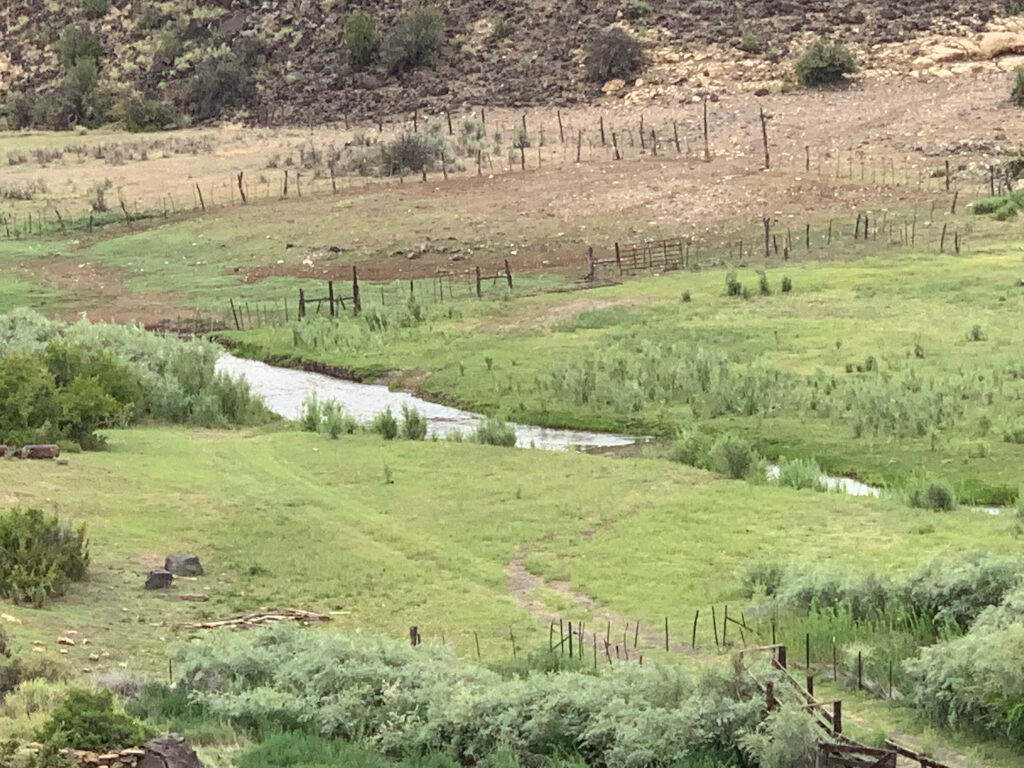

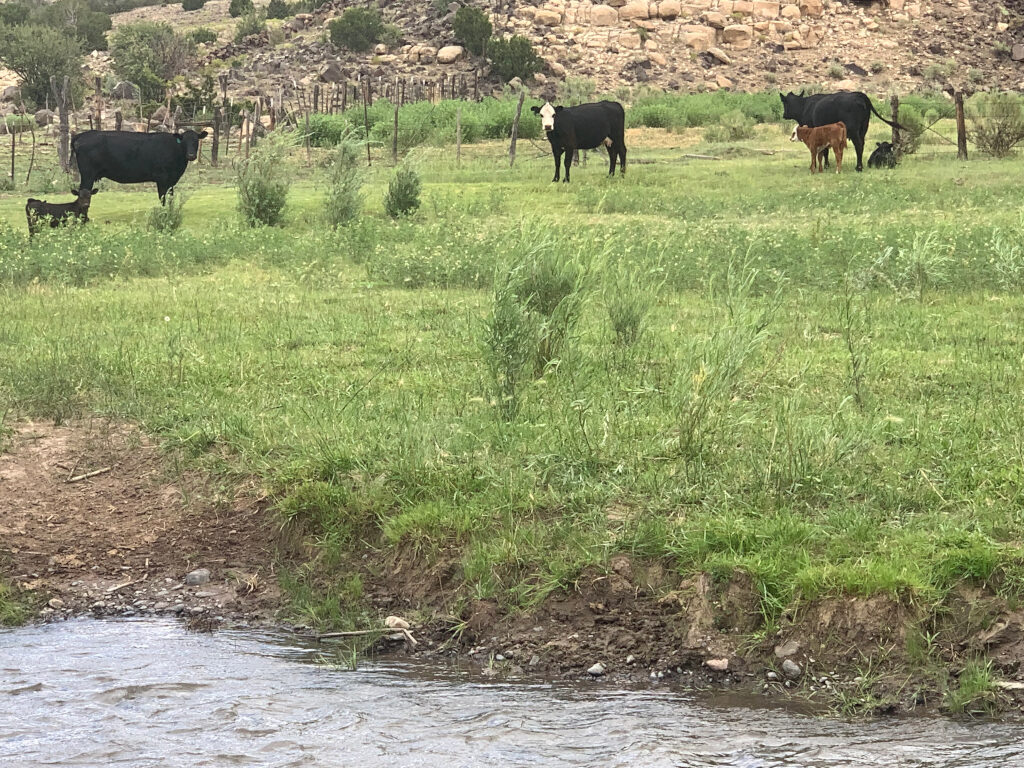
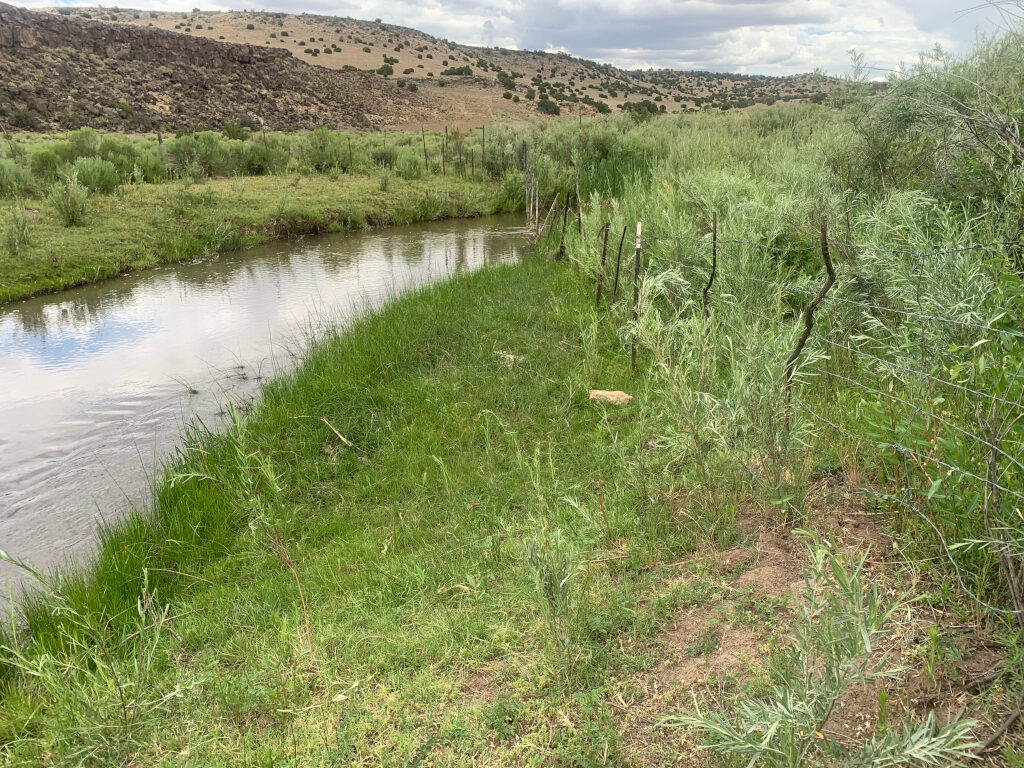
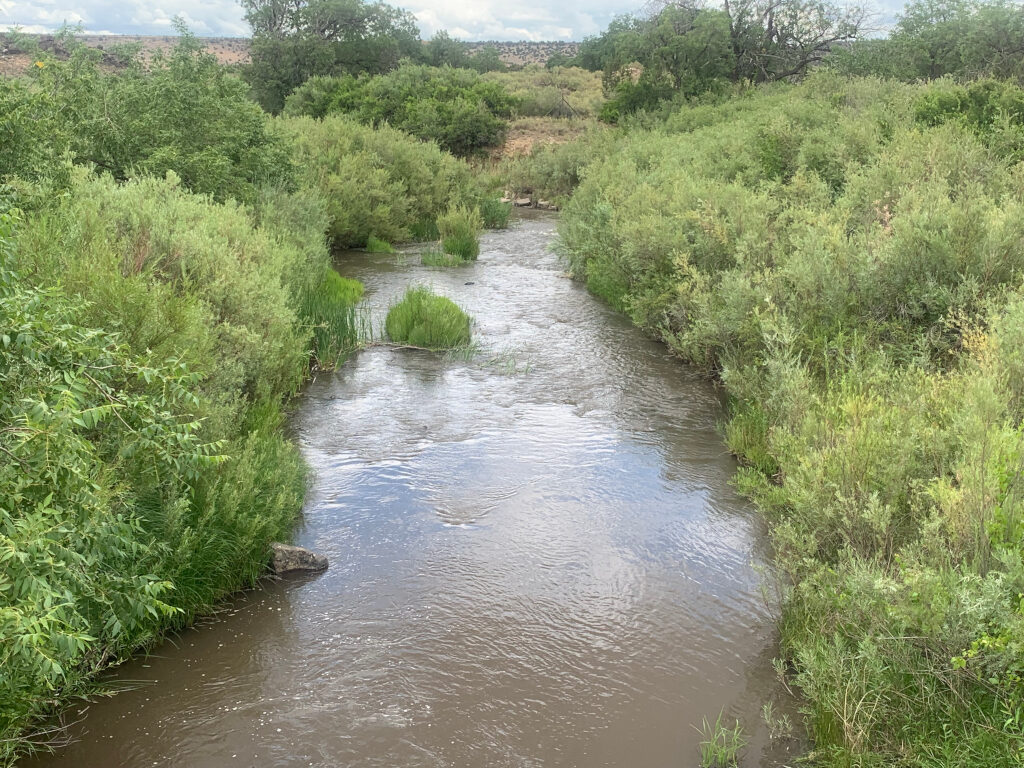
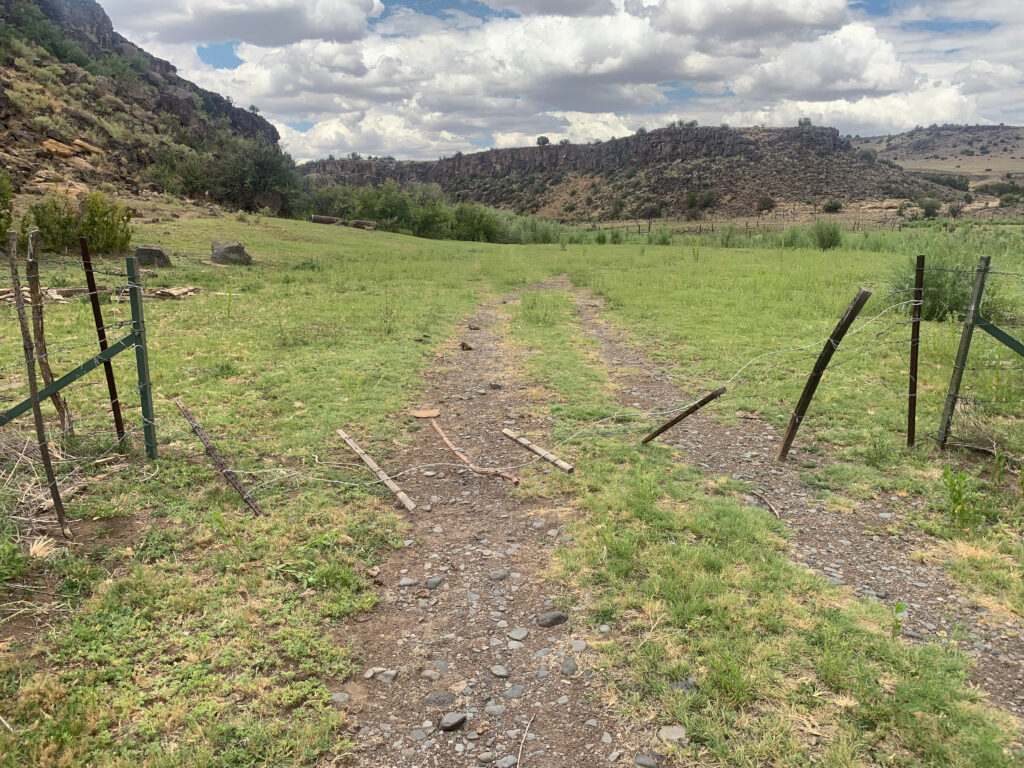

Also, one of the reasons for awarding the lease to the Knights was that they were on the land “daily” so they could better protect it from vandalism. But, as the photos show, the wires of the gate between the wildlife area and the leased land had been cut by some unknown person, and cattle had recently been in the wildlife area. (Before we left we repaired the gate as best we could and notified the Game & Fish Department of the incident.)
Furthermore, according to Arizona State Parks, the Knights received an Open Space Reserve (OSR) grant for $25,552 in 2002. And, per the Arizona Department of Agriculture, they received a Livestock & Crop Conservation Grant (LCCGP) of $43,306 in 2005. NRCS records showed they also received a total of $251,406 in assistance from the Environmental Quality Incentives Program (EQIP) from 2017 to 2019. Much of this money may have been spent on their Forest Service allotments, but it appears that none of it was spent to fence cattle out of the Little Colorado River on the state lease land. The Knights, however, aren’t the only Arizona ranchers with state grazing leases that have also benefited from government assistance, there are many more examples.
Federal Environmental Laws Ignored
Every Arizona State Land Department grazing lease includes Article 24, which requires the lessees to “strictly comply with Environmental Laws.” It defines the term “Environmental Law” as “any relevant federal, state, or local laws, and applicable regulations, rules and ordinances.”
That would obviously include the Endangered Species Act. Just upstream from the Knight’s state lease the threatened Little Colorado spinedace is found in the river, so it’s almost certainly found in the river on their leased land too. If the Game & Fish Department thought it was necessary to protect the threatened fish’s habitat by excluding grazing, why hasn’t the Land Department enforced the same measure on the adjacent state grazing lease?
This isn’t the only state lease where it appears the Endangered Species Act is being ignored. On November 16, 2018, an opinion written by Dr. Nicolaus Hawbaker was published in the Arizona Republic newspaper wherein described hiking the Arizona Trail along the middle Gila River during the summer and finding it full of cow turds. I knew that the U.S. Bureau of Land Management (BLM) owned most of the land along this stretch of the river, and that they had promised the U.S. Fish & Wildlife Service (USFWS) to keep cattle out of river during the growing season, from April through October, in order to protect its desert riparian habitat and comply with the Endangered Species Act.
But Dr. Hawbaker’s experience indicated they weren’t doing it, so I contacted the BLM’s Tucson Field Office, which manages the area, to ask them about the situation. In July 2019 I received a written response from the BLM, which stated:
“State Trust Lands along the river on the Battle Axe allotment are not fenced and the cattle have access to the river. The State Land at the mouth of Walnut Canyon is likely where the writer of the article on the Arizona Trail camped amid the cattle droppings as that is about the only area along the trail to access the river. The BLM has no control or jurisdiction over the State Lands.”
The BLM’s Battle Axe Grazing Allotment, like many BLM allotments in Arizona, is part of a ranch comprised of private, state, and BLM land. The BLM’s allotment is part of the Battle Axe Ranch, which is owned by Wade C. Lueck, and it includes state grazing lease #05-102690.
Livestock management plans for ranches with mixed property ownership are typically drafted with the help of the local Natural Resources Conservation District (NRCD), and Arizona’s NRCDs are administered by the State Land Department. In 2012 the Land Department and the Winkleman NRCD signed off on a Coordinated Resource Management Plant (CRMP) for the ranch. The 2012 Battle Axe Ranch CRMP called for the construction of numerous new livestock fences and waters. But despite that fact that there’s endangered species habitat along the middle Gila River, the CRMP only mentions the river once, on page 3, where it states:
“The southern boundary of the ranch is the Gila River. Historically livestock have used the river for watering and grazing along its banks. In more recent years fencing has been installed along the river to keep cattle from consistently using the river to protect habitat for threatened and endangered species.”
None of the new range improvements identified in the CRMP were designed to specifically protect the river from cattle. The final number of new livestock fences and watering sites must have been quite numerous, because according the NRCS, Mr. Lueck received more than $257,971 in EQIP assistance from 2006 through 2019. Apparently, however, none of this money was spent to build fences to prevent cattle from accessing the Gila River.
In addition to ignoring the Endangered Species Act, the Land Department and its local NRCD appear to have ignored the National Environmental Policy Act (NEPA), which requires that an environmental analysis, with public notice and participation, must be conducted when a federal agency is involved in a project. It doesn’t appear that the BLM was very involved, if at all, in drafting the Battle Axe Ranch CRMP, but the EQIP funds used to help implement it were federal monies, so the NEPA process should have been engaged. It’s likely that stronger protections for the Gila River would have been included in the CRMP if it had been drafted using the NEPA public planning process.
Cattle Damage, BLM White Canyon Wilderness, BLM Battle Axe Grazing Allotment, Battle Axe Ranch, March 23, 2021
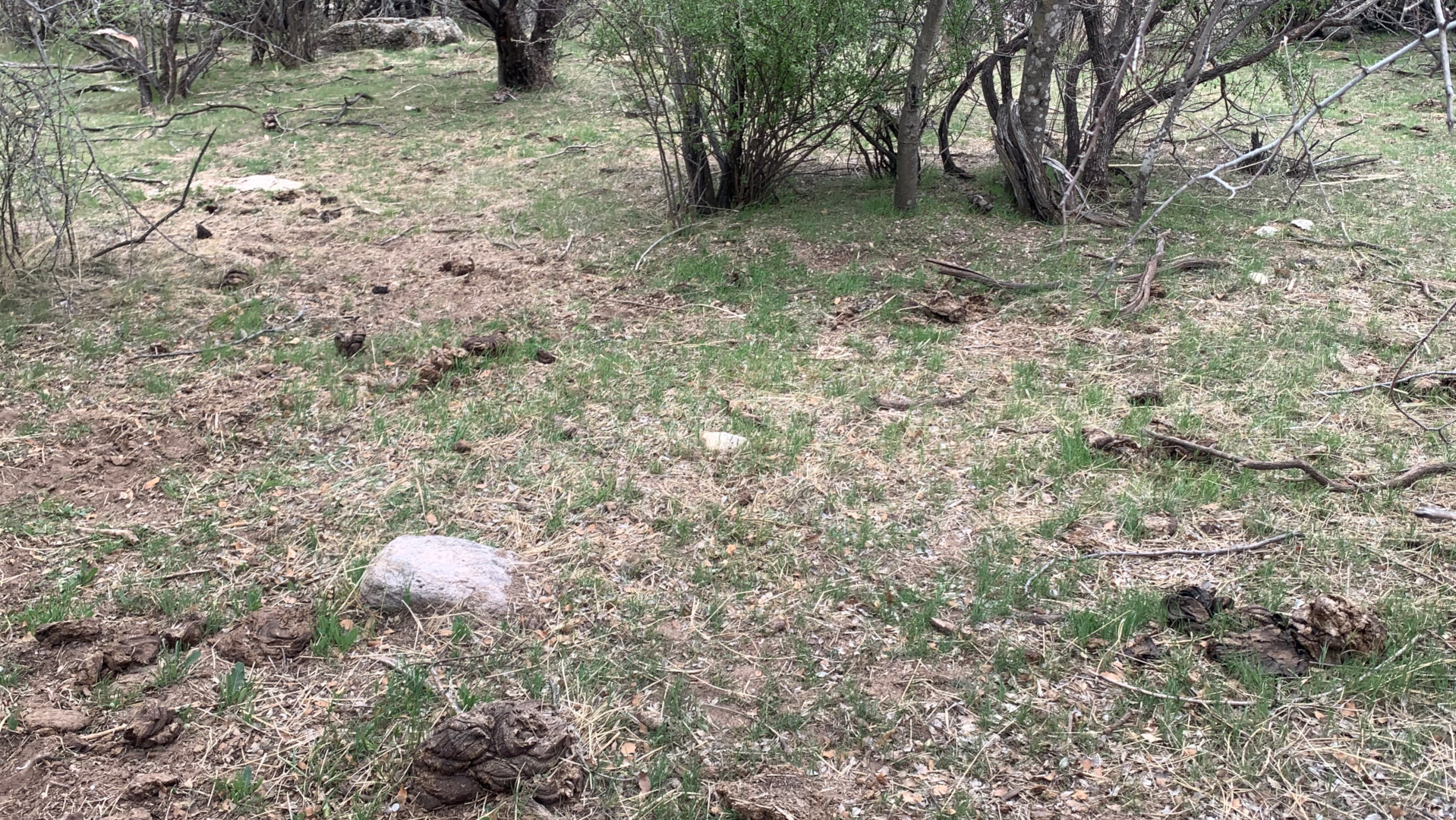
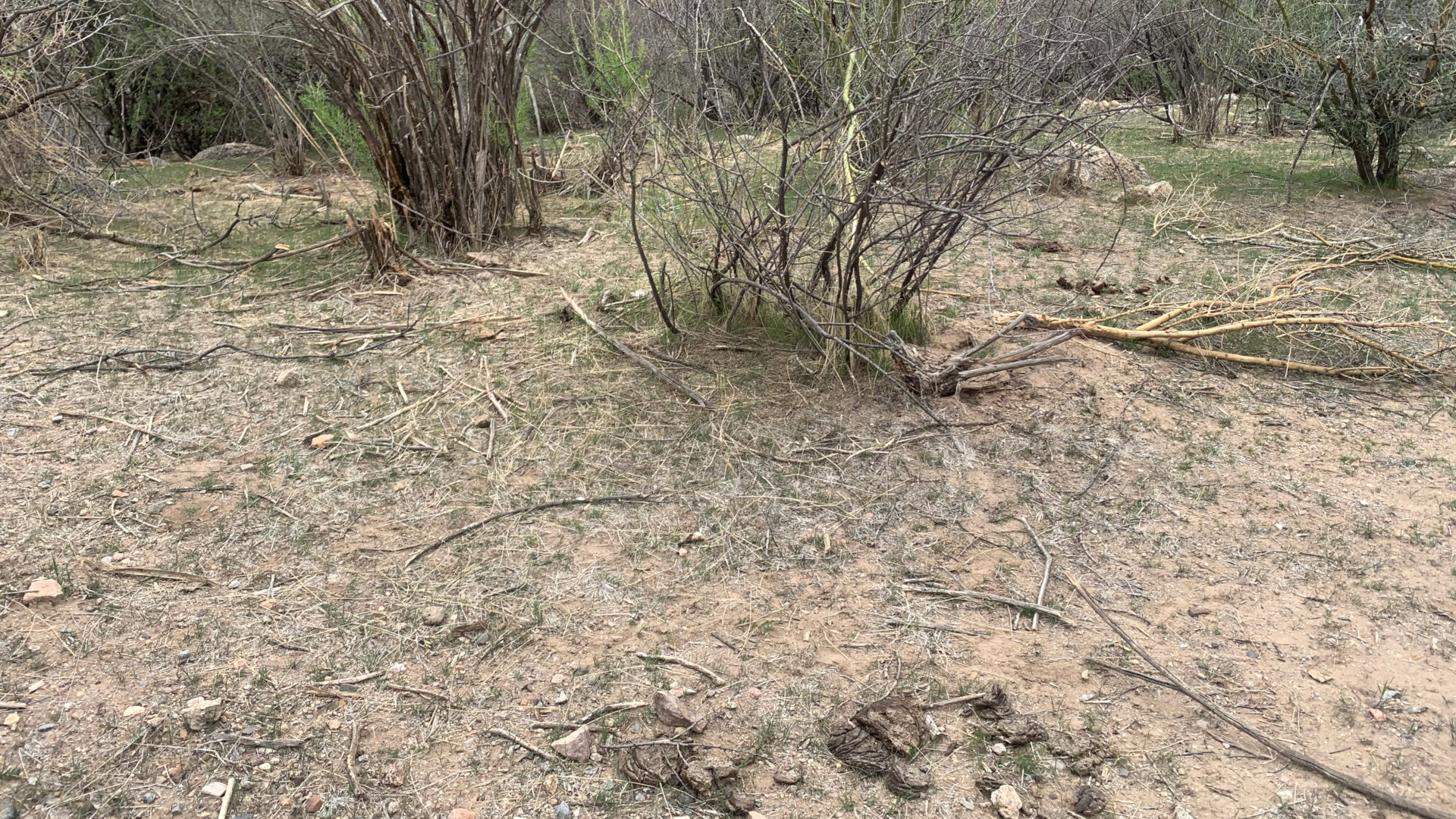


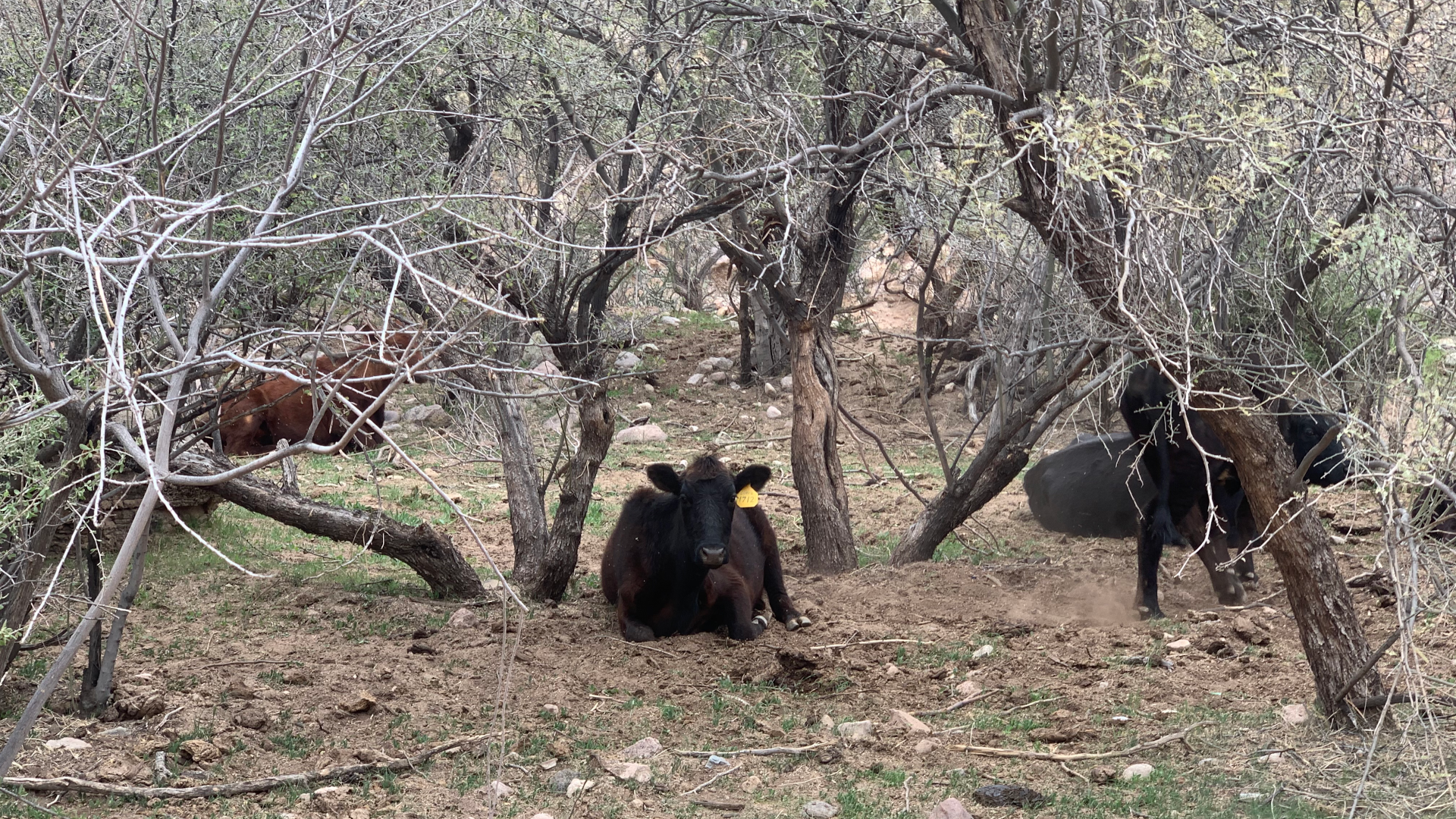
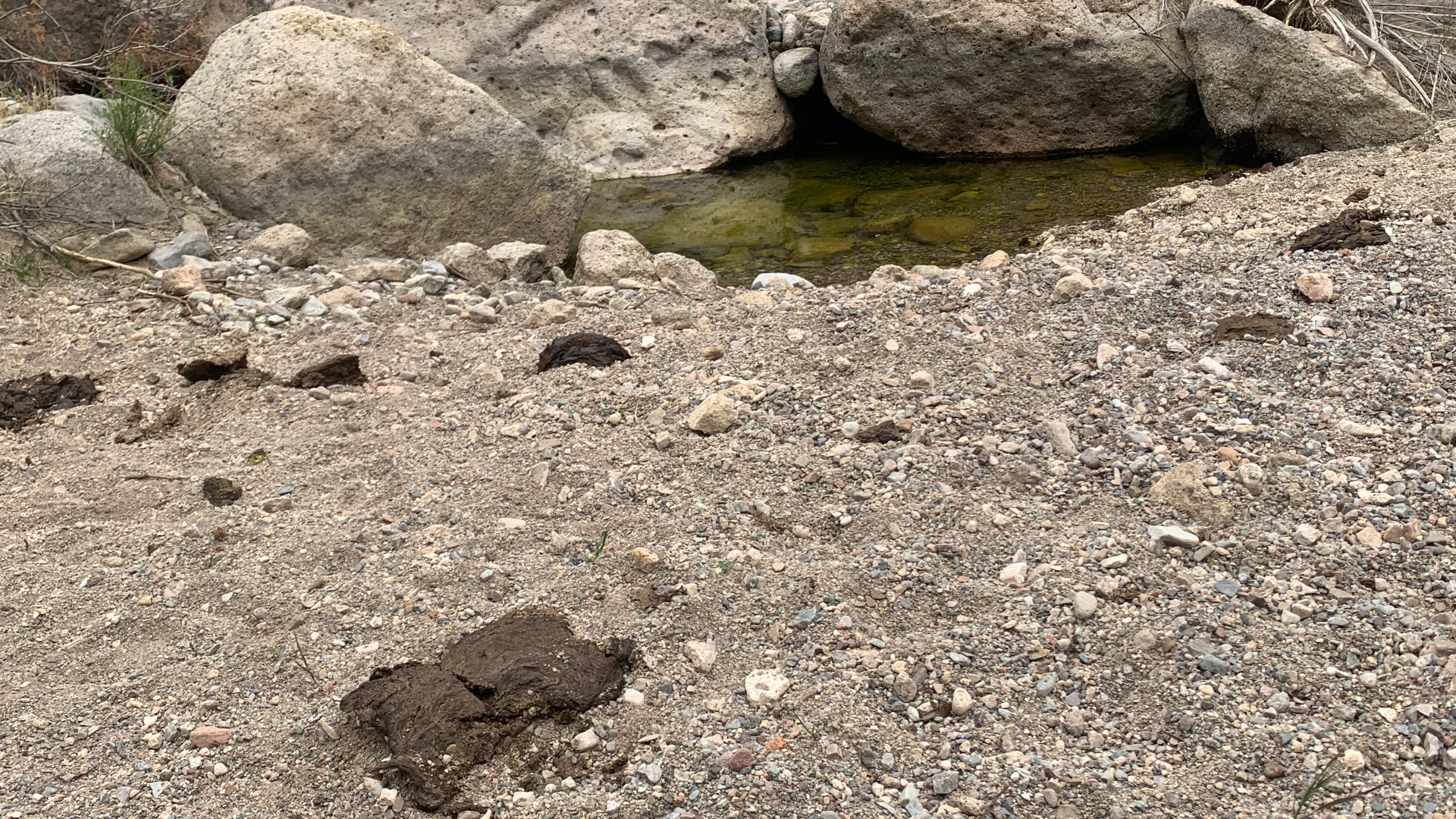
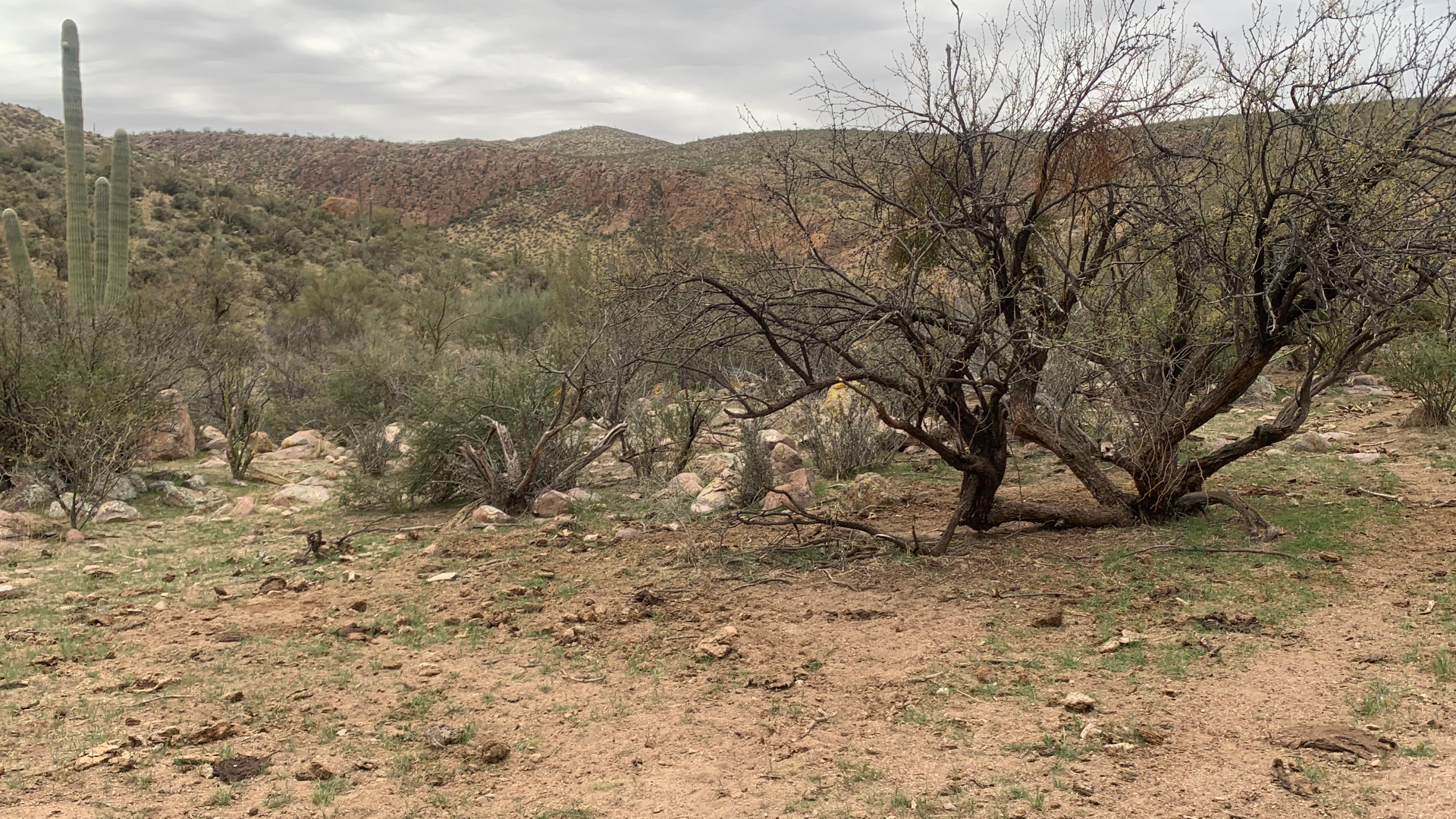
These are just a couple of examples of the Arizona State Land Department and its NRCDs ignoring federal environmental laws. Considering the large number of state grazing leases, there have certainly been similar situations. Furthermore, most of the Department’s NRCDs have been violating the state’s open meeting law, because the agendas and minutes of their meetings aren’t being posted online.
Conclusion
Arizona’s public school students are being shortchanged because Arizona’s state government is managing state grazing leases primarily for the benefit of ranchers. No governor has called for a review of the state grazing fee since it was set at a below-market level in 1996. And state courts have upheld regulations that stymie competitive bidding on state grazing leases in violation of the Enabling Act. Both of these things have resulted in less revenue being generated for the state’s public schools. Furthermore, the State Land Department and its Natural Resource Conservation Districts have failed to protect natural resources on state grazing lands by ignoring federal environmental laws.
*Forest Guardians became WildEarth Guardians when they merged with Sinapu, a Boulder Colorado environmental group in 2008.
Updates
On May 26, 2020, I filed an official complaint with Arizona Attorney General Mark Brnovich regarding the Arizona State Land Department's failure to ensure that the state's Natural Resource Conservation Districts comply with the state's open meeting law.
On August 6, 2021, the Arizona Attorney General’s office finally responded to my complaint when it issued letters which notified the Apache, Chino Winds, and Whitewater Draw NRCDs, which I had named in my complaint, that they were out of compliance with the state’s open meeting law. The NRCDs were given 30 days to verify their compliance. According to the Coconino NRCD's August 26, 2021, meeting minutes, Republican state Rep. Gail Griffin “agreed to intervene” in the matter.
As of September 20, 2021, the Apache, Chino Winds, and Whitewater Draw NRCDs had posted agendas and minutes to the Arizona Association of Conservation Districts website. Many of the state's other local NRCDs, however, still hadn't posted anything there, although a few NRCDs have their own websites. Another Open Meeting Law complaint was filed with the Arizona Attorney General's office September 21, 2021, regarding the noncompliant NRCDs.
On June 10, 2022, I submitted an Open Meeting Law complaint to Arizona Attorney General Mark Brnovich’s office regarding the failure of the Arizona State Land Department’s Board of Appeals to post their meeting minutes. The Board of Appeals, among other things, considers appeals from ranchers with state grazing leases.
On August 25, 2022, the Arizona Attorney General transferred my open meeting law violation complaint against the Arizona State Land Department Board of Appeals to the Maricopa County Attorney to avoid a potential conflict of interest between two state agencies.
On October 20, 2022, Maricopa County Attorney Rachel Mitchell issued a letter in response to my complaint that the Arizona State Land Department’s Board of Appeals wasn’t complying with the state’s open meeting law (OML). The letter asserted that the Board was in compliance with the OML because they are recording their meetings and the recordings are available upon request. There is no information on the Department’s website, however, to inform the public that the Board’s recorded meeting minutes can be requested.
On June 21, 2024, Gov. Katie Hobbs signed HB 2865, creating a new state agency called the Natural Resource Conservation District Board, comprised primarily of local NRCD supervisors. It's tasked with providing administrative assistance to the state's regional Natural Resource Conservation Districts, which was formerly the responsibility of the Arizona State Land Department. The initial operating funds for the Board will come from the Legislature's regular annual appropriation of $650,000 to the state's NRCDs. The NRCD Board is also responsible for dispensing "conservation" and "education" grants from a new NRCD Fund to the local NRCDs and Soil and Water Conservation Districts. The monies in the fund can include state appropriations, grants and contributions - although the Legislature didn't make an initial appropriation to the fund. Most of the grants dispensed by the Board will likely benefit ranchers, as most NRCD supervisors are ranchers.
4 thoughts on “Arizona State Grazing Leases Mismanaged In Favor Of Ranchers”
It sounds as though Arizona is as corrupt and slanted toward cronyism as Louisiana. Too bad the land doesn’t get to vote and that more tax payers aren’t aware of what a rip off of public assets grazing leases generally are.
Vested economic interests always resist change. And there are always politicians willing to be pander to them.
Two years ago few of us from Cochise County went to hear current State Trust Lands head guru Lisa Atkins give a power point presentation at U of A’s “brown bag lunch” series and one of the questions that was asked of her after the talk concluded was to the effect of…”What is State Trust Lands doing as far as environmental enhancement is concerned?” Her answer (paraphrased here) was “Any environmental enhancements are a BYPRODUCT of positive returns to the portfolio holders…” Her bottom line is that the financial portfolio holders drive the whole process of managing State Trust Lands, something that many of us take as poor management at best.
If that’s the case, then she should be in favor of increasing the state’s grazing fee and awarding grazing leases to conservation groups when they submit the highest bids.